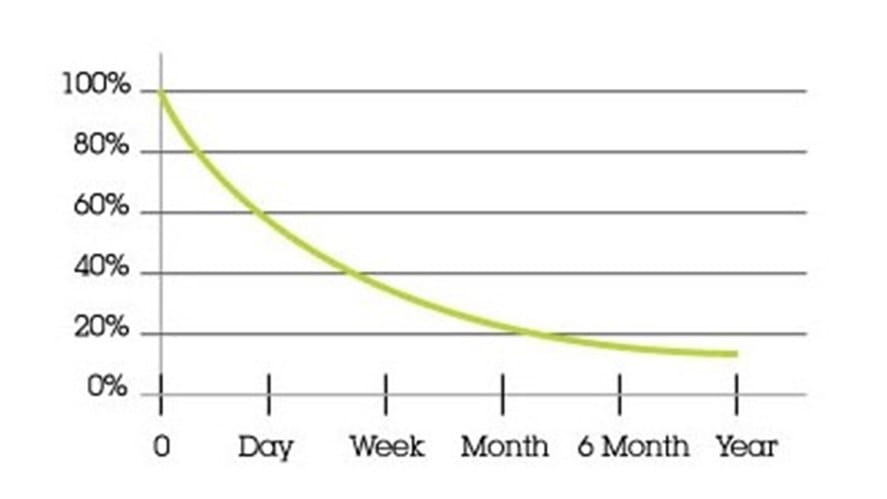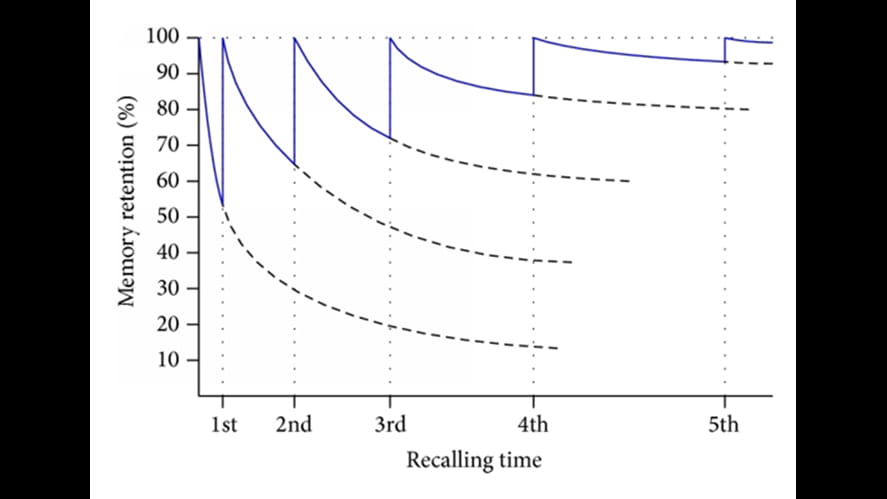We use cookies to improve your online experiences. To learn more and choose your cookies options, please refer to our cookie policy.

Hermann Ebbinghaus was a German psychologist who lived from 1850 to 1909. His main area of study was memory and his work led to what is known as the Ebbinghaus Forgetting Curve, something which is very useful for all of us, and particularly for students when they are revising for exams.
Here is a diagram of how memory fades over time:

This varies between people, but as you can see, forgetting happens very quickly and many of us will forget more than 50% of information within the first few days after learning it.
So how can we prevent this happening? The answer is in regular reviewing, starting soon after the initial learning and then continuing on for subsequent occasions. Each time we review a topic then more stays in our brains and our overall memory of this information improves.
Here is a diagram of how the amount we remember can improve with lots of repetition:

The diagram shows us that each time we review the work it is likely that more will stay in our long-term memory. If we review this several times over a period of weeks or months then almost all information will be retained and remembered.
This is something important to discuss with your children, especially as exams are approaching. Even if a student has done a session of revision and thinks they have learnt something, ensure they return to it again a few days later. Even though students can LEARN something, it is even more important that they can REMEMBER it when they sit in the exam room.
Patrick Horne, Principal